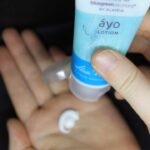Facial epilation is a hair removal technique that has gained popularity for its effectiveness and long-lasting results. If you’re looking for a way to achieve smooth skin on your face, epilation might be an option worth considering. This method involves using a device or tool to remove hair from the root, which can lead to slower regrowth compared to shaving.
Many people appreciate the convenience of epilation, as it can be done at home or in a salon, allowing for flexibility in your beauty routine. As you explore facial epilation, it’s essential to understand how it works and what to expect. The process typically involves the use of an epilator, a device designed to grasp multiple hairs at once and pull them out from the follicle.
This can result in a cleaner finish and less stubble than other methods like shaving. Additionally, because the hair is removed from the root, you may find that regrowth is finer and less noticeable over time. However, before diving into this method, it’s crucial to weigh the benefits against potential drawbacks.
Key Takeaways
- Facial epilation is a popular method of hair removal that involves removing hair from the root using a mechanical device.
- Potential side effects and risks of facial epilation include redness, irritation, and ingrown hairs.
- Facial epilation can impact skin sensitivity, especially for those with sensitive skin, and may cause discomfort during and after the process.
- Long-term effects on hair growth from facial epilation may include thinner and finer hair regrowth over time.
- Pain and discomfort during facial epilation can vary depending on individual pain tolerance and the specific device used.
Potential Side Effects and Risks
While facial epilation can offer smooth skin, it’s important to be aware of the potential side effects and risks associated with the procedure. One common issue is skin irritation, which can manifest as redness, swelling, or even small bumps on the skin’s surface. If you have sensitive skin, you may find that these reactions are more pronounced after epilation.
It’s advisable to perform a patch test on a small area of your skin before committing to a full session to gauge how your skin will react. Another risk to consider is ingrown hairs, which can occur when hair grows back into the skin instead of outward. This can lead to painful bumps and even infections if not treated properly.
To minimize this risk, you might want to exfoliate your skin regularly and keep it moisturized. Additionally, using a clean epilator and following proper hygiene practices can help reduce the likelihood of complications. Understanding these potential side effects will empower you to make informed decisions about whether facial epilation is right for you.
Impact on Skin Sensitivity
Your skin’s sensitivity plays a significant role in how well you tolerate facial epilation. If you have naturally sensitive skin, you may experience heightened discomfort during and after the process. The act of pulling hair from the root can cause temporary pain, and sensitive skin may react more strongly to this sensation.
It’s essential to listen to your body and assess how your skin responds before making epilation a regular part of your routine. To mitigate sensitivity issues, consider preparing your skin before epilation. This could involve cleansing your face thoroughly and applying a soothing gel or cream afterward to calm any irritation.
Some people find that using an epilator with adjustable speed settings allows them to start slowly and gradually increase intensity as they become more accustomed to the sensation. By taking these precautions, you can help ensure that your experience with facial epilation is as comfortable as possible.
Long-Term Effects on Hair Growth
| Long-Term Effects on Hair Growth | Metrics |
|---|---|
| Increased Length | Measuring hair length over time |
| Improved Thickness | Assessing hair thickness with calipers |
| Reduced Hair Loss | Counting the number of hairs shed daily |
| Enhanced Scalp Health | Monitoring scalp condition and dandruff levels |
One of the most appealing aspects of facial epilation is its potential long-term effects on hair growth. When you remove hair from the root consistently over time, you may notice that regrowth becomes finer and less dense. This is because repeated epilation can weaken hair follicles, leading to a reduction in hair production.
For many individuals, this means that over time, they may require less frequent hair removal sessions. However, it’s important to note that results can vary from person to person. Factors such as genetics and hormonal changes can influence how your hair grows back after epilation.
While some may enjoy a significant reduction in hair growth, others might not see as dramatic of an effect. Keeping realistic expectations will help you appreciate the benefits of facial epilation while understanding that individual results may differ.
Pain and Discomfort
Pain and discomfort are often cited as significant concerns when it comes to facial epilation. The sensation of pulling hair from the root can be uncomfortable, especially for those who are new to the process. If you’re considering this method of hair removal, it’s essential to prepare yourself mentally for the experience.
Many people describe the pain as a quick sting that subsides shortly after the hair is removed. To help manage discomfort during epilation, consider employing various techniques. Some individuals find that using an ice pack on their skin before starting can numb the area slightly, making the process more bearable.
Additionally, timing your epilation sessions around your menstrual cycle may also help; many women report increased sensitivity during certain times of the month. By experimenting with different strategies, you can find what works best for you in minimizing pain during facial epilation.
Cost and Maintenance

When evaluating facial epilation as a hair removal method, cost and maintenance are crucial factors to consider. The initial investment in an epilator can vary widely depending on the brand and features you choose. While some high-end models may come with additional attachments for different areas of the body or advanced technology for pain reduction, there are also budget-friendly options available that still deliver effective results.
In terms of maintenance, facial epilation generally requires less frequent upkeep compared to other methods like shaving or waxing. Depending on your hair growth cycle, you might find yourself needing to epilate every few weeks rather than daily or weekly. This can save you both time and money in the long run, making it an appealing option for those looking for a more sustainable hair removal solution.
However, it’s essential to factor in the cost of any additional products you may need for aftercare or maintenance of your epilator.
Suitability for Different Skin Types
Not all hair removal methods are suitable for every skin type, and facial epilation is no exception. If you have oily or acne-prone skin, you may need to exercise caution when considering this technique. The process of pulling hair from the root can exacerbate existing skin issues or lead to breakouts if not done carefully.
It’s crucial to assess your skin type and consult with a dermatologist if you have concerns about how epilation might affect your complexion. On the other hand, individuals with dry or normal skin may find that facial epilation works well for them without significant adverse effects. Regardless of your skin type, it’s essential to follow proper pre- and post-epilation care routines to minimize irritation and promote healing.
This could include using gentle cleansers, applying soothing moisturizers, and avoiding harsh products immediately after treatment.
Alternative Hair Removal Methods
While facial epilation offers several benefits, it’s always wise to explore alternative hair removal methods before making a decision. Shaving is one of the most common alternatives; it’s quick and painless but often leads to stubble within a day or two. Waxing is another popular option that provides longer-lasting results but can be painful and may cause irritation for some individuals.
Laser hair removal has gained traction as a more permanent solution but typically requires multiple sessions and can be costly upfront. Additionally, it may not be suitable for all skin tones or hair colors due to varying levels of effectiveness based on melanin content. Other methods like threading or depilatory creams also exist but come with their own sets of pros and cons.
Ultimately, choosing the right hair removal method depends on your personal preferences, pain tolerance, budget, and skin type. By weighing all options carefully and considering factors such as convenience and long-term results, you can make an informed decision that aligns with your beauty goals. In conclusion, facial epilation presents an effective way to achieve smooth skin but comes with its own set of considerations.
Whether you decide to embrace facial epilation or explore other options, being informed will empower you to make choices that best suit your needs and lifestyle.
When considering the disadvantages of using an epilator on your face, it is important to also explore alternative hair removal methods. One such method is laser hair removal, which offers a more permanent solution to unwanted facial hair. To learn more about the benefits of laser hair removal, you can visit com/sample-page/’>this article on the In Laser Hair Removal website.
Laser hair removal is a safe and effective way to achieve long-lasting results and avoid the potential drawbacks of using an epilator on delicate facial skin.
FAQs
What are the disadvantages of using an epilator on your face?
Using an epilator on your face can cause redness, irritation, and ingrown hairs. It can also be painful, especially for those with sensitive skin.
Can using an epilator on your face cause damage to the skin?
Yes, using an epilator on your face can potentially cause damage to the skin, including redness, irritation, and even scarring if not used properly.
Are there any long-term effects of using an epilator on your face?
Long-term use of an epilator on the face can lead to increased sensitivity, especially for those with delicate or sensitive skin. It can also lead to an increased risk of ingrown hairs and potential damage to the skin.
Is it safe to use an epilator on the face?
While it is generally safe to use an epilator on the face, it is important to use caution and follow the instructions carefully to minimize the risk of skin damage and irritation.
Are there any specific precautions to take when using an epilator on the face?
It is important to cleanse the skin thoroughly before using an epilator on the face and to exfoliate regularly to prevent ingrown hairs. It is also recommended to test the epilator on a small area of the face first to check for any adverse reactions.





